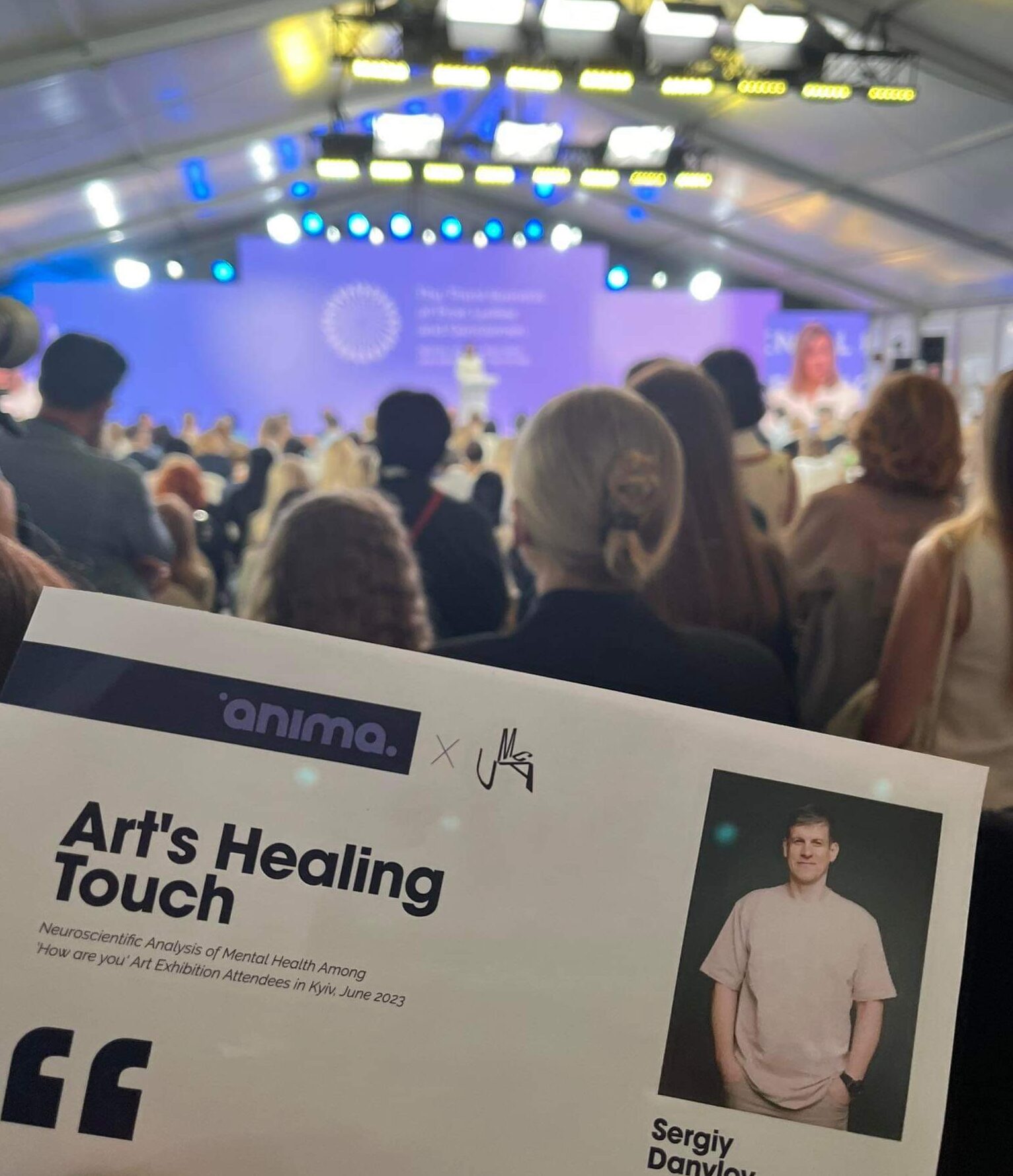
Anima @ the Third Summit of First Ladies and Gentlemen
Held under the insightful theme ‘Mental Health: Resilience and Vulnerability of the Future,’ the Third Summit of First Ladies and Gentlemen was a pivotal event in advancing the global conversation on mental health. In a world grappling with a range of challenges, from a far-reaching pandemic to economic instability, and from growing climate crises to geopolitical conflicts like Russia’s aggression against Ukraine, the summit stood as a beacon for transformative dialogue.
We at Anima were honored to contribute our pioneering mental health research to this important event. Building upon existing scientific consensus, our work elevates the understanding that the arts can act as a powerful therapeutic medium across varied demographics. This is particularly significant in the backdrop of Russian-Ukrainian war, adding a complex layer to our findings. With this broader context in mind, let’s delve into Anima’s specific contributions to the event.
Our research centered around visitors to the exhibit titled ‘How Are You?’ There, attendees had the option to participate in screenings for anxiety and depression. These assessments combined conventional psychological questionnaires with our own innovative attention bias evaluation, powered by state-of-the-art neurotechnology that utilizes webcam-based eye tracking. Our multidimensional approach provides a nuanced view of art’s impact on mental health. This is especially relevant for people affected by the war. There we have gathered data of over 1500 participants, who represented about 10% of the overall exhibition attendees, providing a robust data set. For a more comprehensive understanding of our research, we invite you to delve into our whitepaper dedicated to this study.
Of the qualified participants, approximately 35% underwent screenings both pre- and post-exhibition, further subdivided into 384 individuals screened for anxiety and 129 for depression. Intriguingly, while 42% showed no depressive symptoms, 17.7% exhibited signs of clinical depression, a rate that exceeds the World Health Organization’s global estimates by 11%. This discrepancy raises crucial questions about the accuracy of widely accepted screening methods and the self-assessment tendencies of individuals. Our study also revealed that 5.5% of participants exhibited severely high depressive symptoms as per the PHQ-9 test, a rate that surpasses U.S. standards by 2%. The transformative power of art became evident when 68% of attendees reported feeling less depressed post-exhibition. Beyond these initial findings on depressive symptoms, our study also explored the subtleties of emotional well-being through Attention Bias metrics.
The research highlighted a significant link between Attention Bias (AB) scores and self-assessments post-art exposure. This correlation points to art’s role in elevating self-awareness, aiding real-time emotional self-management. Pre-exhibition, only half of those at high risk for depression accurately assessed their condition. This accuracy improved by 10% post-exhibition. In addition to the overarching AB scores, our research dives deeper to evaluate its components: anhedonic and dysphoric biases. We found that dysphoric bias aligns closely with a myriad of negative psychological states, including tension, irritability, and even suicidal thoughts. Anhedonic bias, on the other hand, is particularly associated with a diminished interest in activities and appetite, signifying not just a loss of joy but a loss of motivation at its most severe.
The exhibition did not exacerbate anxiety levels, but substantially boosted the mood among initially anxious visitors. About 10% of attendees reported high anxiety levels via the GAD-7 test, a figure that significantly exceeds WHO estimates for Ukraine, particularly in times of conflict. Post-exhibition, anxiety levels decreased in 50% of the visitors. Notably, the most significant changes were observed among those who were highly anxious prior to viewing the exhibition. Those who were initially less anxious became more attentive and focused.
This study confirms that art exhibitions have a profound impact on visitors’ depressive symptoms. They can elevate positive mood, alleviate anxiety, and offer a new perspective on the world. This serves as an important support mechanism for those facing emotional challenges, especially in the context of military conflict. Art has the potential to be not just an aesthetic source of pleasure but also a tool for emotional well-being and perception change.